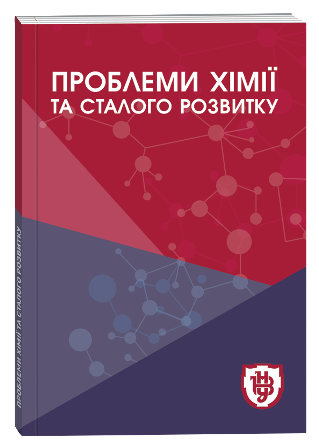DOCKING STUDIES OF THE MECHANISM OF ACTION OF A POTENTIAL NON-STEROIDAL ANTI-INFLAMMATORY AGENT 3-[(3,5-DICHLOROPYRIDIN-2- YL)OXY]-3,4-DIHYDRO-2H-BENZO[4,5]-IMIDAZO[2,1-B][1,3]-THIAZINE
DOI:
https://doi.org/10.32782/pcsd-2022-2-8Keywords:
3-[(3,5-dichloropyridin-2-yl)oxy]-3,4-dihydro-2H-benzo[4,5]imidazo[2,1-b][1,3]-thiazine, anti-inflammatory (anti-exudative) activity, docking studies.Abstract
The work is devoted to the docking research of the mechanism of action of the nonsteroidal anti-inflammatory agent of the imidazothiazine type, 3-[(3,5-dichloropyridin-2-yl)oxy]-3,4-dihydro-2H-benzo[4,5]imidazo[2,1- b][1,3]-thiazine. The synthesized compound 4q with previously established high antioxidant activity was investigated for the docking of one molecule with another – molecular docking. According to the results of the experiment, it was established that the mechanism of anti-inflammatory activity of 4q is based on non-selective effect on cyclooxygenases of the first and second types. According to the docking simulation results, the presence of chlorine atom in the 4q molecule creates additional hydrophobic interaction that increases the total binding energy. As a result of the docking studies, it was found that 3-[(3,5-dichloropyridin-2-yl)oxy]-3,4-dihydro-2H-benzo[4,5] imidazo[2,1-b][ 1,3]-thiazine 4q when bound to COX-1 is placed in a hydrophobic pocket, the structure of which consists of a series of lipophilic amino acids, ILE563, VAL349, ALA527, LEU352, TRP387, PHE518, TYR385, TYR348, LEU 384. Additionally, 4q shows good binding to the active site of COX-2. This interaction is implemented due to hydrophobic interactions with a number of amino acids, VAL509, ALA513, VAL335, LEU370, TRP373 and TYR 371. Performed docking studies showed that 3-[(3,5-dichloropyridin-2-yl)oxy]-3,4-dihydro-2H-benzo[4,5]imidazo[2,1-b] [1,3]-thiazine 4q forms a number of additional bonds with LEU338 (Pi-amide), ALA502 (Pi-alkyl), GLY512 (hydrogencarbon bond). However, similar to the binding to the COX-1 enzyme, the tested compound 4q did not form any hydrogen bonds. It was shown that 3-((3,5-dichloropyridin-2-yl)oxy)-3,4-dihydro-2H-benzo[4,5]imidazo[2,1-b][1,3]-thiazine 4q which demonstrated good binding to COX-1 and COX-2 enzymes in in silico docking studies even without the formation of hydrogen bonds can be used as an effective model scaffold for the design of new potential non-steroidal anti-inflammatory agents.
References
Bacchi, S.; Palumbo, P.; Sponta, A.; Coppolino, M.F. Clinical pharmacology of non-steroidal anti-inflammatory drugs: a review. Antiinflamm Antiallergy Agents. Med Chem. 2012, 11(1), 52-64.
Green, G.A. Understanding NSAIDs: from aspirin to COX-2. Clin Cornerstone. 2001, 3(5), 50-60.
Burayk, S.; Oh-Hashi, K.; Kandeel, M. Drug Discovery of New Anti-Inflammatory Compounds by Targeting Cyclooxygenases. Pharmaceuticals (Basel). 2022, 24, 15(3), 282.
Cuesta, S.A.; Meneses, L. The Role of Organic Small Molecules in Pain Management. Molecules. 2021, 1, 26(13), 4029.
Gong, J.-X.; Cui, Y. He, Z.-L.; Guo, Y.-W. Synthesis, spectral characterization, and antituberculosis activity of thiazino[3,2-а]benzimidazole derivatives. Phosphorus, Sulfur, Silicon. 2016, 191, 7, 1036-1041.
Kim, P.; Kang, S.; Boshoff, H.I.; Jiricek, J.; Collins, M.; Singh, R.; Manjunatha, U.H.; Niyomrattanakit, P.; Patel, S.; Zhang, L.; Goodwin, M.; Dick, T.; Keller, T.H.; Dowd, C.S.; Barry, C.E. Structure−Activity Relationships of Antitubercular Nitroimidazoles. 2. Determinants of Aerobic Activity and Quantitative Structure−Activity Relationships. J. Med. Chem. 2009, 52, 1329-1344.
Thompson, A.M.; Marshall, A.J.; Maes, L.; Yarlett, N.; Bacchi, C.J. Assessment of a pretomanid analogue library for African trypanosomiasis: Hit-to-lead studies on 6-substituted 2-nitro-6,7-dihydro-5H-imidazo[2,1-b][1,3]thiazine 8-oxides. Bioorg. Med. Chem. Lett. 2018, 28, 207-213.
Thompson, A.M.; O’Connor, P.D.; Marshall, A.J.; Francisco, A.F.; Kelly, J.M.; Riley, J.; Read, K.D.; Perez, C.J.; Cornwall, S.; Thompson, R.C.A.; Keenan, M.; White, K.L.; Charman, S.A.; Zulfiqar, B.; Sykes, M.L.; Avery, V.M.; Chatelain, E.; Denny, W.A. Re-evaluating pretomanid analogues for Chagas disease: Hit-to-lead studies reveal both in vitro and in vivo trypanocidal efficacy. Eur. J. Med. Chem. 2020, 207, 112849.
Radini, A.M.; Abdel-Wahab, B.F.; Khidre, R.E. Synthetic routes to imidazothiazines. Phosphorus, Sulfur, Silicon Relat. Elem. 2016, 191, 6, 844-856.
Tales A. C. Goulart, T. A. C.; Kazmirski, J. A. G.; Back, D. F.; Zeni, G. Cyclization of Thiopropargyl Benzimidazoles by Combining Iron(III) Chloride and Diorganyl Diselenides. J. Org. Chem. 2019, 84, 14113-14126.
Schoeder, C.T.; Kaleta, M.; Mahardhika, A.B.; Olejarz-Maciej, A.; Łażewska, D.; Kieć-Kononowicz, K.; Müller, C.E. Structure-activity relationships of imidazothiazinones and analogs as antagonists of the cannabinoid-activated orphan G protein-coupled receptor GPR18. Eur. J. Med. Chem. 2018, 155, 381-397.
Saliyeva, L.; Slyvka N.; Litvinchuk, M.; Holota, S.; Grozav, A.; Yakovychuk, N.; Vovk M. Synthesis and evaluation of bioactivity of (2-pyridinyloxy)substituted (benzo)imidazo[2,1-b][1,3]thiazines. Biointerface Research in Applied Chemistry. 2022, 12(4), 5031 – 5044.
Slyvka N.; Saliyeva, L.; Holota, S.; Tkachuk, V.; Vaskevych, A.; Vaskevych, R.; Vovk M. Convenient Synthesis of 4-pyridinyloxy-Modified imidazo[2,1-b][1,3]thiazines as Potential Anti-inflammatory Agents. Biointerface Research in Applied Chemistry. 2023, 13(2), 183.







